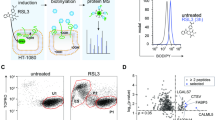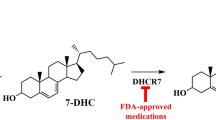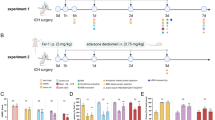Abstract
As a major contributor to neonatal death and neurological sequelae, hypoxic-ischemic encephalopathy (HIE) lacks a viable medication for treatment. Oxidative stress induced by hypoxic-ischemic brain damage (HIBD) predisposes neurons to ferroptosis due to the fact that neonates accumulate high levels of polyunsaturated fatty acids for their brain developmental needs but their antioxidant capacity is immature. Ferroptosis is a form of cell death caused by excessive accumulation of iron-dependent lipid peroxidation and is closely associated with mitochondria. Mitophagy is a type of mitochondrial quality control mechanism that degrades damaged mitochondria and maintains cellular homeostasis. In this study we employed mitophagy agonists and inhibitors to explore the mechanisms by which mitophagy exerted ferroptosis resistance in a neonatal rat HIE model. Seven-days-old neonatal rats were subjected to ligation of the right common carotid artery, followed by exposure to hypoxia for 2 h. The neonatal rats were treated with a mitophagy activator Tat-SPK2 peptide (0.5, 1 mg/kg, i.p.) 1 h before hypoxia, or in combination with mitochondrial division inhibitor-1 (Mdivi-1, 20 mg/kg, i.p.), and ferroptosis inhibitor Ferrostatin-1 (Fer-1) (2 mg/kg, i.p.) at the end of the hypoxia period. The regulation of ferroptosis by mitophagy was also investigated in primary cortical neurons or PC12 cells in vitro subjected to 4 or 6 h of OGD followed by 24 h of reperfusion. We showed that HIBD induced mitochondrial damage, ROS overproduction, intracellular iron accumulation, lipid peroxidation and ferroptosis, which were significantly reduced by the pretreatment with Tat-SPK2 peptide, and aggravated by the treatment with Mdivi-1 or BNIP3 knockdown. Ferroptosis inhibitors Fer-1 and deferoxamine B (DFO) reversed the accumulation of iron and lipid peroxides caused by Mdivi-1, hence reducing ferroptosis triggered by HI. We demonstrated that Tat-SPK2 peptide-activated BNIP3-mediated mitophagy did not alleviate neuronal ferroptosis through the GPX4-GSH pathway. BNIP3-mediated mitophagy drove the P62-KEAP1-NRF2 pathway, which conferred ferroptosis resistance by maintaining iron and redox homeostasis via the regulation of FTH1, HO-1, and DHODH/FSP1-CoQ10-NADH. This study may provide a new perspective and a therapeutic drug for the treatment of neonatal HIE.
This is a preview of subscription content, access via your institution
Access options
Subscribe to this journal
Receive 12 print issues and online access
$259.00 per year
only $21.58 per issue
Buy this article
- Purchase on SpringerLink
- Instant access to full article PDF
Prices may be subject to local taxes which are calculated during checkout










Similar content being viewed by others
References
Luo L, Deng L, Chen Y, Ding R, Li X. Identification of lipocalin 2 as a ferroptosis-related key gene associated with hypoxic-ischemic brain damage via STAT3/NF-κB signaling pathway. Antioxid (Basel). 2023;12:186.
Finder M, Boylan GB, Twomey D, Ahearne C, Murray DM, Hallberg B. Two-year neurodevelopmental outcomes after mild hypoxic ischemic encephalopathy in the era of therapeutic hypothermia. JAMA Pediatr. 2020;174:48–55.
Niatsetskaya ZV, Sosunov SA, Matsiukevich D, Utkina-Sosunova IV, Ratner VI, Starkov AA, et al. The oxygen free radicals originating from mitochondrial complex I contribute to oxidative brain injury following hypoxia-ischemia in neonatal mice. J Neurosci: Off J Soc Neurosci. 2012;32:3235–44.
Thatipamula S, Al Rahim M, Zhang J, Hossain MA. Genetic deletion of neuronal pentraxin 1 expression prevents brain injury in a neonatal mouse model of cerebral hypoxia-ischemia. Neurobiol Dis. 2015;75:15–30.
Su L, Zhang J, Gomez H, Kellum JA, Peng Z. Mitochondria ROS and mitophagy in acute kidney injury. Autophagy. 2023;19:401–14.
Zhang Y, Wang Y, Xu J, Tian F, Hu S, Chen Y, et al. Melatonin attenuates myocardial ischemia-reperfusion injury via improving mitochondrial fusion/mitophagy and activating the AMPK-OPA1 signaling pathways. J Pineal Res. 2019;66:e12542.
Tang YC, Tian HX, Yi T, Chen HB. The critical roles of mitophagy in cerebral ischemia. Protein Cell. 2016;7:699–713.
Baek SH, Noh AR, Kim KA, Akram M, Shin YJ, Kim ES, et al. Modulation of mitochondrial function and autophagy mediates carnosine neuroprotection against ischemic brain damage. Stroke 2014;45:2438–43.
He G, Xu W, Tong L, Li S, Su S, Tan X, et al. Gadd45b prevents autophagy and apoptosis against rat cerebral neuron oxygen-glucose deprivation/reperfusion injury. Apoptosis. 2016;21:390–403.
Jiang T, Yu JT, Zhu XC, Zhang QQ, Tan MS, Cao L, et al. Ischemic preconditioning provides neuroprotection by induction of AMP-activated protein kinase-dependent autophagy in a rat model of ischemic stroke. Mol Neurobiol. 2015;51:220–9.
Wu X, Zheng Y, Liu M, Li Y, Ma S, Tang W, et al. BNIP3L/NIX degradation leads to mitophagy deficiency in ischemic brains. Autophagy. 2021;17:1934–46.
Tang D, Kang R, Berghe TV, Vandenabeele P, Kroemer G. The molecular machinery of regulated cell death. Cell Res. 2019;29:347–64.
Zhang M, Lin W, Tao X, Zhou W, Liu Z, Zhang Z, et al. Ginsenoside Rb1 inhibits ferroptosis to ameliorate hypoxic-ischemic brain damage in neonatal rats. Int Immunopharmacol. 2023;121:110503.
Gao M, Yi J, Zhu J, Minikes AM, Monian P, Thompson CB, et al. Role of mitochondria in ferroptosis. Mol Cell. 2019;73:354–363.e3.
Zheng J, Fang Y, Zhang M, Gao Q, Li J, Yuan H, et al. Mechanisms of ferroptosis in hypoxic-ischemic brain damage in neonatal rats. Exp Neurol. 2023;372:114641.
Dong B, Jiang Y, Shi B, Zhang Z, Zhang Z. Selenomethionine alleviates decabromodiphenyl ether-induced oxidative stress and ferroptosis via the NRF2/GPX4 pathway in the chicken brain. J Hazard Mater. 2023;465:133307.
Zhang L, Hu Z, Li Z, Lin Y. Crosstalk among mitophagy, pyroptosis, ferroptosis, and necroptosis in central nervous system injuries. Neural Regen Res. 2024;19:1660–70.
Zhang L, Lin Y, Bai W, Sun L, Tian M. Human umbilical cord mesenchymal stem cell-derived exosome suppresses programmed cell death in traumatic brain injury via PINK1/Parkin-mediated mitophagy. CNS Neurosci Ther. 2023;29:2236–58.
Song DD, Zhang TT, Chen JL, Xia YF, Qin ZH, Waeber C, et al. Sphingosine kinase 2 activates autophagy and protects neurons against ischemic injury through interaction with Bcl-2 via its putative BH3 domain. Cell Death Dis. 2017;8:e2912.
Chen JL, Wang XX, Chen L, Tang J, Xia YF, Qian K, et al. A sphingosine kinase 2-mimicking TAT-peptide protects neurons against ischemia-reperfusion injury by activating BNIP3-mediated mitophagy. Neuropharmacology. 2020;181:108326.
Sheng R, Zhang TT, Felice VD, Qin T, Qin ZH, Smith CD, et al. Preconditioning stimuli induce autophagy via sphingosine kinase 2 in mouse cortical neurons. J Biol Chem. 2014;289:20845–57.
Tan LL, Jiang XL, Xu LX, Li G, Feng CX, Ding X, et al. TP53-induced glycolysis and apoptosis regulator alleviates hypoxia/ischemia-induced microglial pyroptosis and ischemic brain damage. Neural Regen Res. 2021;16:1037–43.
Sheng R, Liu XQ, Zhang LS, Gao B, Han R, Wu YQ, et al. Autophagy regulates endoplasmic reticulum stress in ischemic preconditioning. Autophagy. 2012;8:310–25.
Wang X, Li M, Wang F, Mao G, Wu J, Han R, et al. TIGAR reduces neuronal ferroptosis by inhibiting succinate dehydrogenase activity in cerebral ischemia. Free Radic Biol Med. 2024;216:89–105.
Wang XX, Wang F, Mao GH, Wu JC, Li M, Han R, et al. NADPH is superior to NADH or edaravone in ameliorating metabolic disturbance and brain injury in ischemic stroke. Acta Pharmacol Sin. 2022;43:529–40.
Dai C, Wu B, Chen Y, Li X, Bai Y, Du Y, et al. Aagab acts as a novel regulator of NEDD4-1-mediated Pten nuclear translocation to promote neurological recovery following hypoxic-ischemic brain damage. Cell Death Differ. 2021;28:2367–84.
Deng J, Liao Y, Chen J, Chen A, Wu S, Huang Y, et al. N6-methyladenosine demethylase FTO regulates synaptic and cognitive impairment by destabilizing PTEN mRNA in hypoxic-ischemic neonatal rats. Cell Death Dis. 2023;14:820.
Gao K, Chen Y, Mo R, Wang C. Excessive BNIP3- and BNIP3L-dependent mitophagy underlies the pathogenesis of FBXL4-mutated mitochondrial DNA depletion syndrome. Autophagy. 2024;20:460–2.
Chen Y, Jiao D, Liu Y, Xu X, Wang Y, Luo X, et al. FBXL4 mutations cause excessive mitophagy via BNIP3/BNIP3L accumulation leading to mitochondrial DNA depletion syndrome. Cell Death Differ. 2023;30:2351–63.
Vara-Pérez M, Rossi M, Van den Haute C, Maes H, Sassano ML, Venkataramani V, et al. BNIP3 promotes HIF-1α-driven melanoma growth by curbing intracellular iron homeostasis. EMBO J. 2021;40:e106214.
Tang Y, Gu W, Cheng L Evodiamine attenuates oxidative stress and ferroptosis by inhibiting the MAPK signaling to improve bortezomib-induced peripheral neurotoxicity. Environ Toxicol. 2024;39:1556–66.
Wei S, Qiu T, Yao X, Wang N, Jiang L, Jia X, et al. Arsenic induces pancreatic dysfunction and ferroptosis via mitochondrial ROS-autophagy-lysosomal pathway. J Hazard Mater. 2020;384:121390.
Dong W, Gong F, Zhao Y, Bai H, Yang R. Ferroptosis and mitochondrial dysfunction in acute central nervous system injury. Front Cell Neurosci. 2023;17:1228968.
Fujii K, Fujiwara-Tani R, Nukaga S, Ohmori H, Luo Y, Nishida R, et al. Involvement of ferroptosis induction and oxidative phosphorylation inhibition in the anticancer-drug-induced myocardial injury: ameliorative role of pterostilbene. Int J Mol Sci. 2024;25:3015.
Li J, Yang J, Xian Q, Su H, Ni Y, Wang L Kaempferitrin attenuates unilateral ureteral obstruction-induced renal inflammation and fibrosis in mice by inhibiting NOX4-mediated tubular ferroptosis. Phytother Res. 2024;38:2656–68.
Lee H, Zandkarimi F, Zhang Y, Meena JK, Kim J, Zhuang L, et al. Energy-stress-mediated AMPK activation inhibits ferroptosis. Nat Cell Biol. 2020;22:225–34.
Bersuker K, Hendricks JM, Li Z, Magtanong L, Ford B, Tang PH, et al. The CoQ oxidoreductase FSP1 acts parallel to GPX4 to inhibit ferroptosis. Nature. 2019;575:688–92.
Liang D, Feng Y, Zandkarimi F, Wang H, Zhang Z, Kim J, et al. Ferroptosis surveillance independent of GPX4 and differentially regulated by sex hormones. Cell. 2023;186:2748–2764.e22.
Anandhan A, Dodson M, Shakya A, Chen J, Liu P, Wei Y, et al. NRF2 controls iron homeostasis and ferroptosis through HERC2 and VAMP8. Sci Adv. 2023;9:eade9585.
Dodson M, Castro-Portuguez R, Zhang DD. NRF2 plays a critical role in mitigating lipid peroxidation and ferroptosis. Redox Biol. 2019;23:101107.
Sun X, Ou Z, Chen R, Niu X, Chen D, Kang R, et al. Activation of the p62-Keap1-NRF2 pathway protects against ferroptosis in hepatocellular carcinoma cells. Hepatology. 2016;63:173–84.
Kong L, Deng J, Zhou X, Cai B, Zhang B, Chen X, et al. Sitagliptin activates the p62-Keap1-Nrf2 signalling pathway to alleviate oxidative stress and excessive autophagy in severe acute pancreatitis-related acute lung injury. Cell Death Dis. 2021;12:928.
Cizmeci MN, Wilson D, Singhal M, El Shahed A, Kalish B, Tam E, et al. Neonatal hypoxic-ischemic encephalopathy spectrum: severity-stratified analysis of neuroimaging modalities and association with neurodevelopmental outcomes. J Pediatr. 2024;266:113866.
Liu MY, Jin J, Li SL, Yan J, Zhen CL, Gao JL, et al. Mitochondrial fission of smooth muscle cells is involved in artery constriction. Hypertension. 2016;68:1245–54.
Liu L, Feng D, Chen G, Chen M, Zheng Q, Song P, et al. Mitochondrial outer-membrane protein FUNDC1 mediates hypoxia-induced mitophagy in mammalian cells. Nat Cell Biol. 2012;14:177–85.
Murakawa T, Okamoto K, Omiya S, Taneike M, Yamaguchi O, Otsu K. A Mammalian mitophagy receptor, Bcl2-L-13, recruits the ULK1 complex to induce mitophagy. Cell Rep. 2019;26:338–345.e6.
Lahiri V, Klionsky DJ. PHB2/prohibitin 2: an inner membrane mitophagy receptor. Cell Res. 2017;27:311–2.
Gao F, Chen D, Si J, Hu Q, Qin Z, Fang M, et al. The mitochondrial protein BNIP3L is the substrate of PARK2 and mediates mitophagy in PINK1/PARK2 pathway. Hum Mol Genet. 2015;24:2528–38.
Yazdankhah M, Ghosh S, Shang P, Stepicheva N, Hose S, Liu H, et al. BNIP3L-mediated mitophagy is required for mitochondrial remodeling during the differentiation of optic nerve oligodendrocytes. Autophagy. 2021;17:3140–59.
Green DR, Galluzzi L, Kroemer G. Mitochondria and the autophagy-inflammation-cell death axis in organismal aging. Science. 2011;333:1109–12.
Shi RY, Zhu SH, Li V, Gibson SB, Xu XS, Kong JM. BNIP3 interacting with LC3 triggers excessive mitophagy in delayed neuronal death in stroke. CNS Neurosci Ther. 2014;20:1045–55.
Yang X, Hei C, Liu P, Song Y, Thomas T, Tshimanga S, et al. Inhibition of mTOR pathway by rapamycin reduces brain damage in rats subjected to transient forebrain ischemia. Int J Biol Sci. 2015;11:1424–35.
Xie C, Ginet V, Sun Y, Koike M, Zhou K, Li T, et al. Neuroprotection by selective neuronal deletion of Atg7 in neonatal brain injury. Autophagy. 2016;12:410–23.
Dixon SJ, Stockwell BR. The role of iron and reactive oxygen species in cell death. Nat Chem Biol. 2014;10:9–17.
Dixon SJ, Lemberg KM, Lamprecht MR, Skouta R, Zaitsev EM, Gleason CE, et al. Ferroptosis: an iron-dependent form of nonapoptotic cell death. Cell. 2012;149:1060–72.
Friedmann Angeli JP, Schneider M, Proneth B, Tyurina YY, Tyurin VA, Hammond VJ, et al. Inactivation of the ferroptosis regulator Gpx4 triggers acute renal failure in mice. Nat Cell Biol. 2014;16:1180–91.
Stockwell BR, Jiang X, Gu W. Emerging mechanisms and disease relevance of ferroptosis. Trends Cell Biol. 2020;30:478–90.
Doll S, Freitas FP, Shah R, Aldrovandi M, da Silva MC, Ingold I, et al. FSP1 is a glutathione-independent ferroptosis suppressor. Nature. 2019;575:693–8.
Tong G, Chen Y, Chen X, Fan J, Zhu K, Hu Z, et al. FGF18 alleviates hepatic ischemia-reperfusion injury via the USP16-mediated KEAP1/Nrf2 signaling pathway in male mice. Nat Commun. 2023;14:6107.
Song J, Wang H, Sheng J, Zhang W, Lei J, Gan W, et al. Vitexin attenuates chronic kidney disease by inhibiting renal tubular epithelial cell ferroptosis via NRF2 activation. Mol Med. 2023;29:147.
Acknowledgements
This work was supported by the National Natural Science Foundation of China (No. 82301957 and No.82001382), the National Natural Science Foundation of China (No.82271405 and No.82071379), the China Postdoctoral Science Foundation (No. 2022M712311), and Suzhou Science and Technology Development Program (Healthcare Science and Technology Innovation Project) (No. SKY2022177).
Author information
Authors and Affiliations
Contributions
HN and RS conceived and supervised the study. XXW and ML designed research, XXW, ML, XWX, WBZ and YMJ carried out the experiments. XXW, ML and XWX collected, analyzed and interpreted the data. XXW wrote the manuscript. ML, XWX, WBZ, YMJ, LLL, ZHQ, RS and HN revised the manuscript. LLL, ZHQ, RS and HN contributed reagents/materials/analysis tools. XXW, ML and LLL provided funding support. All authors read and approved the submitted manuscript. We thank Bronwen Gardner, PhD, from Liwen Bianji (Edanz) (www.liwenbianji.cn/), for editing the English text of a draft of this manuscript.
Corresponding authors
Ethics declarations
Competing interests
The authors declare no competing interests.
Supplementary information
Rights and permissions
Springer Nature or its licensor (e.g. a society or other partner) holds exclusive rights to this article under a publishing agreement with the author(s) or other rightsholder(s); author self-archiving of the accepted manuscript version of this article is solely governed by the terms of such publishing agreement and applicable law.
About this article
Cite this article
Wang, Xx., Li, M., Xu, Xw. et al. BNIP3-mediated mitophagy attenuates hypoxic–ischemic brain damage in neonatal rats by inhibiting ferroptosis through P62–KEAP1–NRF2 pathway activation to maintain iron and redox homeostasis. Acta Pharmacol Sin 46, 33–51 (2025). https://doi.org/10.1038/s41401-024-01365-x
Received:
Accepted:
Published:
Issue date:
DOI: https://doi.org/10.1038/s41401-024-01365-x
Keywords
This article is cited by
-
Discovery and genesis mechanism of high content diamondoids in the Gulong shale oil
Scientific Reports (2025)
-
Sex and region-specific disruption of autophagy and mitophagy in Alzheimer’s disease: linking cellular dysfunction to cognitive decline
Cell Death Discovery (2025)
-
Complexin 2 contributes to the protective effect of NAD+ on neuronal survival following neonatal hypoxia-ischemia
Acta Pharmacologica Sinica (2025)
-
Nuclear protein 1 protects against neonatal hypoxic-ischemic encephalopathy by inhibiting neuronal ferroptosis by improving iron storage
In Vitro Cellular & Developmental Biology - Animal (2025)



